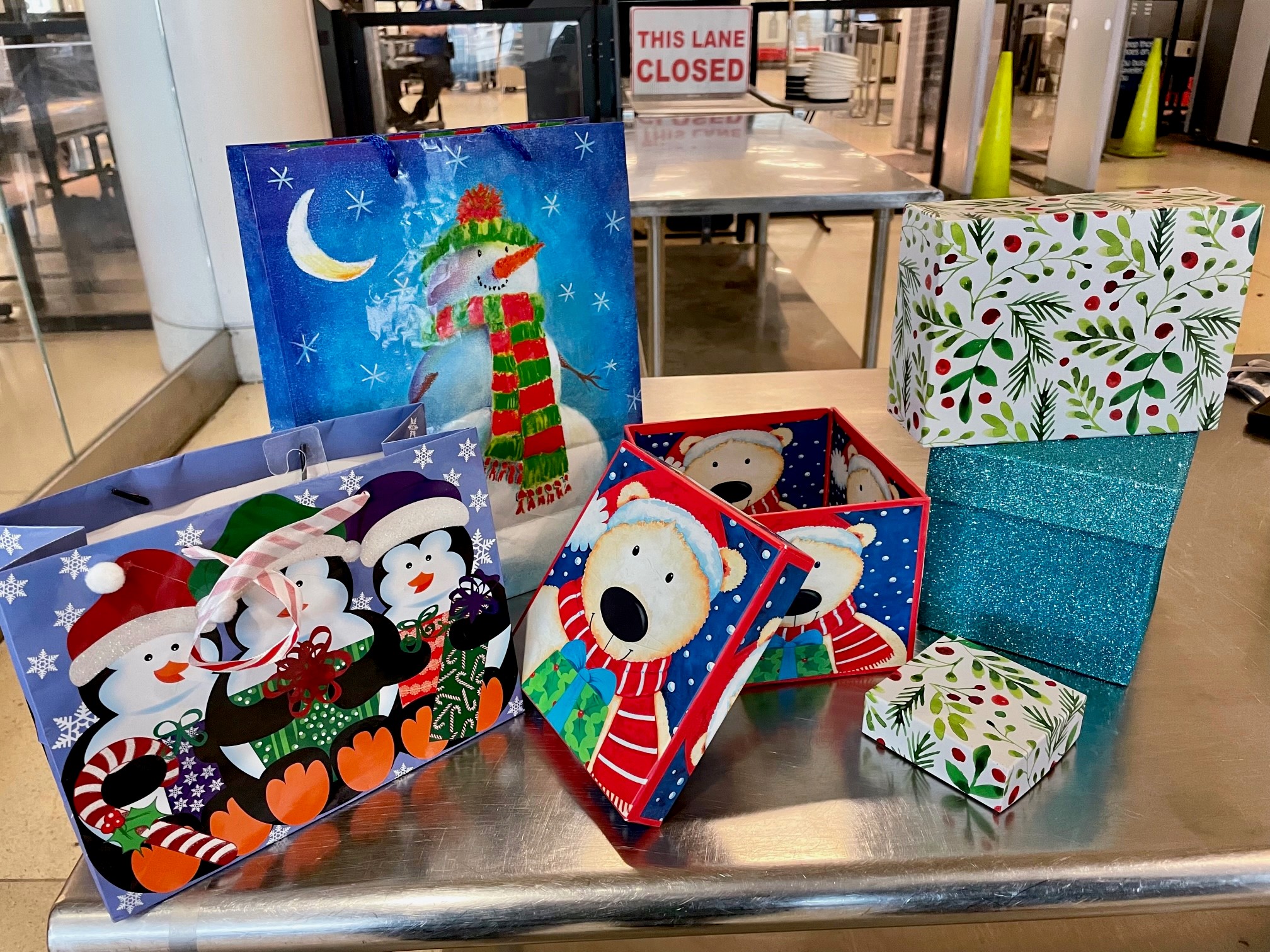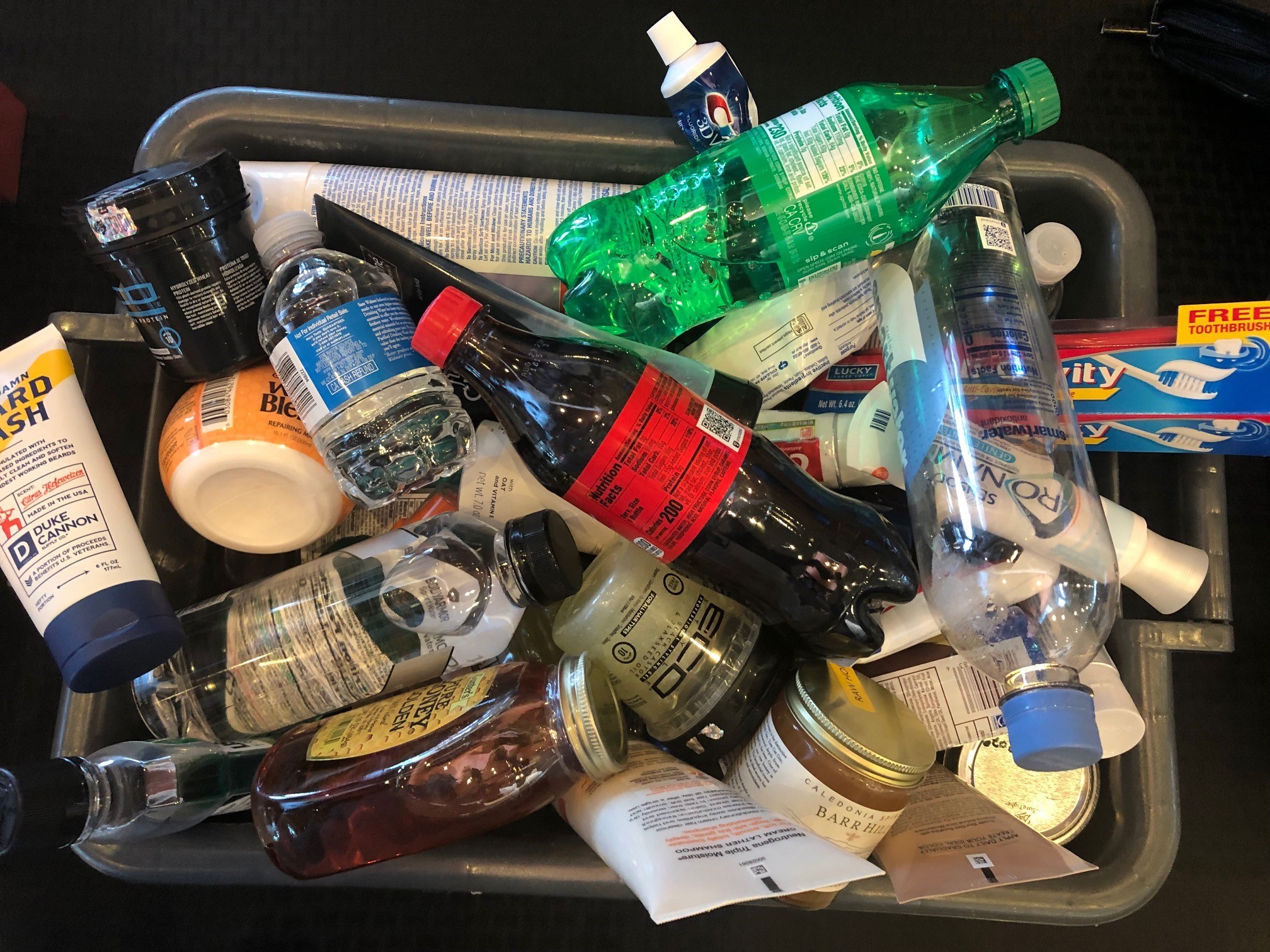 Use of gift boxes and gift bags are recommended for traveling with gifts. (TSA photos)
Use of gift boxes and gift bags are recommended for traveling with gifts. (TSA photos)
ARLINGTON, Va.-- The Transportation Security Administration (TSA) is prepared for holiday travelers who are planning to fly out of the National Capital Region during the Christmas and New Year holidays as passenger volume is expected to increase during the end-of-year travel period.
“TSA is committed to supporting a secure environment for airline passengers, TSA employees and airport personnel, throughout the holiday season and into the new year,” said John Busch, TSA’s Federal Security Director for Ronald Reagan Washington National Airport.
TSA expects travel volume to be close to pre-pandemic levels. We saw that during the Thanksgiving holiday and it appears we are already on track to meet or exceed the 2019 volume of travelers. The busiest days are expected to be today and on Friday, Dec. 30.
“I have several recommendations for travelers at this time of year. First is to get to the airport early. Second is to know before you go—meaning know what is in your carry-on bag so that you don’t have any prohibited items that will likely trigger an alarm. And third is to use TSA’s tools to get your questions answered so that you are prepared for security screening.”
Tip #1: Get to the airport early
Travelers should arrive a minimum of two hours before their scheduled domestic flights and three hours before scheduled international flights. Roadways near airports are going to be crowded. It is going to take longer to locate an available parking space at the airport. Airline check-in counters will be busy. This is all before you even get to the security checkpoint.
If you find yourself waiting in a security checkpoint lane, use that time to your advantage. That’s the ideal time to remove items from your pockets and place them into a carry-on bag. It’s also the time to get out your ID and boarding pass so you’re not fumbling in your wallet for your ID when you step up to the TSA travel document checking podium.
Tip #2: Know before you go
Travelers need to know what can and cannot go in their carry-on bag, from firearms to oversize liquids. Passengers will spend more time in the security checkpoint if their carry-on items trigger an alarm because it results in TSA’s need to resolve the alarm by opening the carry-on bag to determine what triggered the alarm.
“Advance planning and packing properly will facilitate the screening process and ease your travel experience at the airport,” Busch said.
The most common item that travelers bring to the checkpoint that is not permitted through the screening process are liquids, gels and aerosols that are larger than the acceptable limit. Each passenger may carry liquids, gels and aerosols that are 3.4 ounces (100 ml) or smaller through a checkpoint as long as those items fit into a one quart-sized, resealable bag. This is known as the 3-1-1 bag. Common travel items that must comply with the liquids rule include toothpaste, shampoo, conditioner, sun block, body spray, mouthwash and lotions. Containers of liquids, gels and aerosols that are larger than 3.4 ounces (100 ml), regardless of the size container, can be transported in checked baggage.

TSA officers also are seeing travelers arrive at the checkpoint with bottles of water, juice, energy drinks, coffee and soda. TSA officers will give travelers the choice to exit the security checkpoint to drink their beverages in the terminal or allow the officer to dispose of it. Travelers may bring empty containers such as a water bottle or insulated bottle through checkpoints and fill them on the secure side of the checkpoint.
TSA recently reported a record number of firearms have been found this year, well over 6,300 since January 1. I need all responsible gun owners to clear their carry-on bag of any weapons, ammunition (loose bullets), and any other dangerous items. Bringing these to our checkpoint will likely delay the traveler to the point of missing their flight. This also disrupts and severely delays our screening process for everyone in line. Please, if you own a firearm, confirm its location before departing from home.
Tip #3: Use TSA’s tools for your resources
TSA offers several ways for travelers to find out if an item is permitted in a carry-on bag, checked bag, either or neither and TSA has just launched a new higher level of assistance for travelers with questions about airport security screening procedures. Airline passengers may now send a text message using any mobile device to “AskTSA” (275-872). A virtual assistant is available 24 hours a day, 365 days a year. For more complicated questions, @AskTSA staff are available daily from 8 a.m. to 6 p.m. on Twitter and on Facebook Messenger.
The TSA web site has a feature on the homepage called “What can I bring?” Type in the name of the item and it will let you know if it should be packed in a checked bag or carry-on bag. The same handy feature is available on the free downloadable MyTSA app. The MyTSA app gives users 24/7 access to the most frequently requested airport security information on any mobile device, including a searchable database that will let you know whether an item can be packed in a carry-on bag, checked bag, either or neither. The app also identifies delay information and current weather conditions at your favorite airports nationwide.
TSA Cares is a helpline that provides travelers with disabilities, medical conditions and other special circumstances additional assistance during the security screening process. Call 72 hours prior to traveling at 855-787-2227 with questions about screening policies, procedures and what to expect at the security checkpoint. Or email TSA Cares. TSA Cares is available 8 a.m. to 11 p.m. ET on weekdays and from 9 a.m. to 8 p.m. ET on weekends and holidays.
Tip #4: Traveling with gifts
This also is the time of year that passengers frequently travel with gifts. TSA recommends packing gifts in gift bags or gift boxes instead of wrapping them because if a gift triggers an alarm, it will need to be opened to resolve the alarm. Wrapped gifts that trigger an alarm will need the gift wrap removed, but if the gift is in a bag or a box, it is simple to look at the item to resolve the alarm.
Tip #5: Traveling with food
Individuals often like to travel with food items during the holiday season. Foods may be transported on flights. What’s important to know is whether the food item can be packed in a carry-on or checked bag. Solid food items like fruitcake, candy canes and chocolates are solids and may be transported in a carry-on bag. However, liquids and spreadable foods such as egg nog, wine, champagne, maple syrup and preserves are not solid and should be packed in checked bags. Here’s a helpful tip: If you can spill it, spread it, spray it, pump it or pour it and it is larger than 3.4 ounces, it needs to be packed in a checked bag.
